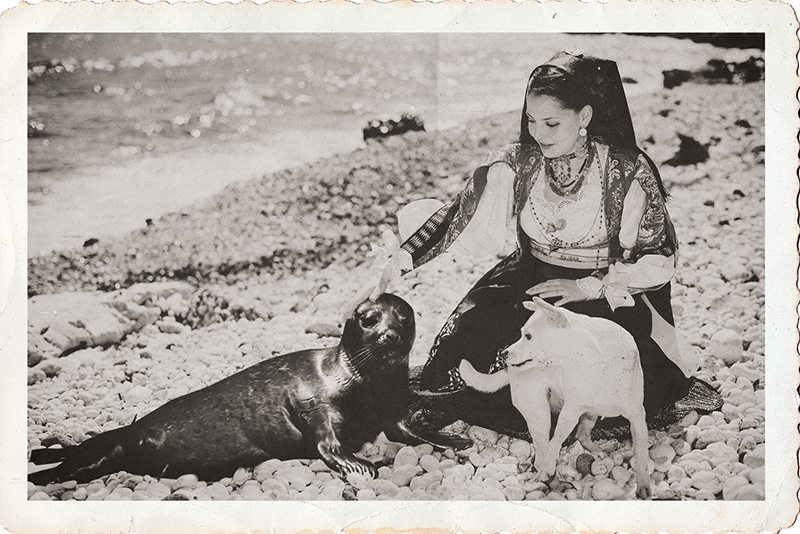The Legendary Monk Seal In Sardinia 0 Comments

Excellent news has been circulating in the last three years: the monk seal is repopulating some coasts of the Mediterranean. Yes, because this meek and nice pinniped about fifty years ago had practically disappeared but now, it's back and the event is exciting. From 500 to 700 specimens of the monk seal remain, the number is often discordant, living on some Mediterranean islands’ coast.
This animal is very similar to other seals, with an elongated body, protected by a thick layer of fat and covered with thick short pelt, has always been a co-interpreter of the Mediterranean populations’ history. The ancient Greeks protected it as a tribute to Poseidon and Apollon and its image appears in many Greek civilization’s ceramics. Classical authors such as Homer, Plutarch and Aristotle have mentioned it in their writings and it enjoyed a reputation among fishermen as a good luck symbol on sea fishing trips.
It usually sleeps on the surface in the open sea or using small ravines on the seabed, in which case it periodically emerges to breathe. It feeds on cephalopod molluscs, crustaceans and fish, moray eels, croakers, groupers, dentex and pelagic fish caught in the open sea.
Very voracious, they move even for a few dozens of kilometres a day to get food, diving continuously; they reach depths up to 90 metres, and perhaps even more, for hunting the prey. The adult males are strongly territorial and, during the reproductive period in autumn, they fight with other males. Females begin the reproductive period after 3-5 years of age, in autumn, and gestation lasts about 12 months. They prefer stretches of sea close to the coast, looking for isolated beaches, caves or small ravines accessible only from the sea, for giving birth and breastfeeding, which take place on land. Seal pups are already in the water a few days after birth. The suckling lasts for twelve weeks, after which the offspring tend to abandon the original group. The monk seal lives 20 to 30 years.
For centuries the monk seal has populated the eastern coast of Sardinia, swimming free in the waters of the Gulf of Orosei, 130 km and two hours from the Gabbiano Azzurro Hotel & Suites, from the Cave Of Ispinigoli And Bue Marino, to the beaches of Cala Cartoe, of Cala Luna, of Cala Mariolu, up to the Grotta del Fico (Bau-nei), taking refuge in the caves and feeding on what the sea offered in abundance. The name of the Grotte del Bue Marino (sea ox caves) derives from the Sardinian "Su Oe 'e Mare" (ox of the sea) name that the shepherds gave to the monk seal, whose dimensions recalled those of the terrestrial oxen.
But since the 1980s, when livelihood fishing became commercial fishing, its prowess put the monk seal in conflict with fishermen, as was breaking nets to take over the catch, cancelling the entire fishing expedition, and on the other hand its docility made it easy prey of the fishermen who were defending their work. This is why the fishermen named Cala Mariolu, where "mariolu" means "thief”.
Good news comes from the conservation policies referring to the monk seal no longer as "critically endangered" but only as "endangered".
It is therefore established that Sardinia is not only popular with tourists, but also with monk seals, whose return we anxiously await.
“...At first it seemed to me like a kind of tuna, so big it was. Then my eyes widened as I looked into hers. She had human eyes, and a sad expression of a woman, alone in the vastness of the sea.” (Encounter with the monk seal by Jack from the web)
--Witten by Daniela Toti
Photo by Salvatore Grispu
Share your opinion with us!